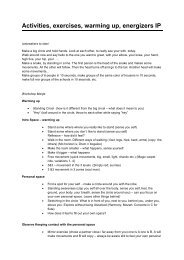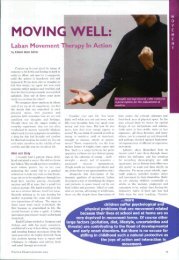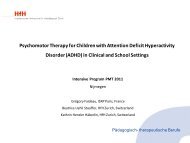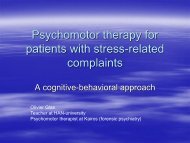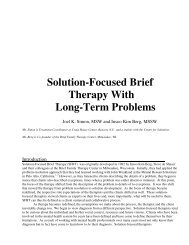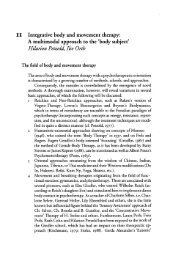Factors and Processes Contributing to Resilience
Factors and Processes Contributing to Resilience
Factors and Processes Contributing to Resilience
Create successful ePaper yourself
Turn your PDF publications into a flip-book with our unique Google optimized e-Paper software.
<strong>Fac<strong>to</strong>rs</strong> <strong>and</strong> <strong>Processes</strong> Contrlbufing <strong>to</strong> <strong>Resilience</strong> 101<br />
drug use or the informal social control climate (Moskowitz, 1983): Hansen<br />
<strong>and</strong> Graham (1991) have empirical evidence that changing the perceptions<br />
of AOD norms is more salient than specific resistance skills training in<br />
reducing AOD use in youth. ·<br />
Multi-Cultural <strong>and</strong> Bi-Gender Competencies. Research studies have<br />
also found multicultural or bicultural competence as related <strong>to</strong> less sub·<br />
stance use in youth (Oetting & Beauvais, 19.90; Buriel, Calzada, & Vasquez,<br />
1982). Youth who are capable of acting competently in several cultures if<br />
needed are more successful. Additionally, bi·ge·nder competence is related<br />
<strong>to</strong> increased resilience <strong>and</strong> life success in women (Dunn, 1994).<br />
Empathy <strong>and</strong> Interpersonal Socia/ Skills. Another hallmark of<br />
resilient children is their sense of responsibility for others, willingness <strong>to</strong><br />
care for others, <strong>and</strong> ability<strong>to</strong>be empathetic of the needs of others (Werner,<br />
1985; 1986). Related coping skills include interpersonal social skills (Platt,<br />
Belding, & Husb<strong>and</strong>, in press), an engaging personality, good listening<br />
<strong>and</strong> communicating ski11s (Wolin, 1991), <strong>and</strong> politencss (Kumpfer, 1990a,b).<br />
Resilient children are responsive <strong>and</strong> active in their relationships with<br />
others <strong>and</strong> elicit more positive responses from their associates even from<br />
infancy (Demos, 1989; Werner & Smith, 1982). Because of their increased<br />
social skills, resilient children are popular <strong>and</strong> have increased choice of<br />
fdends allowing them <strong>to</strong> establish friendships with positive, prosocial peers<br />
if they desire (Berndt & Ladd, 1989).<br />
When combined with the availability of social support (Rutter, 1987)<br />
<strong>and</strong> the willingness <strong>to</strong> use external supports (Schwartz, Jacobson, Hauser,<br />
& Dornbush, 1989), resilient children are capable of getting the social supports<br />
they need <strong>to</strong> buffer stressors <strong>and</strong> teach them even more coping skills.<br />
Jacobs <strong>and</strong> Wolin (1991) report that resilient children of alcoholics even as<br />
young children sought ••oases of health in interacting wilh the healthiest parts<br />
of their troubled families" (p. 111 ). By middle childhood, these children are<br />
connecting with neighbors, teachers, <strong>and</strong> other substitute parents. Werner<br />
(1985) also identified attachment <strong>to</strong> community institutions <strong>and</strong> positive<br />
rote models of youth Ieaders as important. Felsman (1989) found in his<br />
study of resilient Colombian street children that they were skillful in locating<br />
existing social supports <strong>and</strong> using ther;n <strong>to</strong> their advantage. Children of<br />
mothers who are willing <strong>to</strong> use social agency support are reported <strong>to</strong> have<br />
more competencies (Musick, Scott, Spencer, Goldman, & Cohler, 1984),<br />
possibly because of the effective role modeling of the mother, increased<br />
resulting resources or increased social contact.<br />
Wolin <strong>and</strong> Wolin (1993) report resilient individuals have a capacity for<br />
intimacy. In addition, they are careful in their choice of intimates. Rutter



